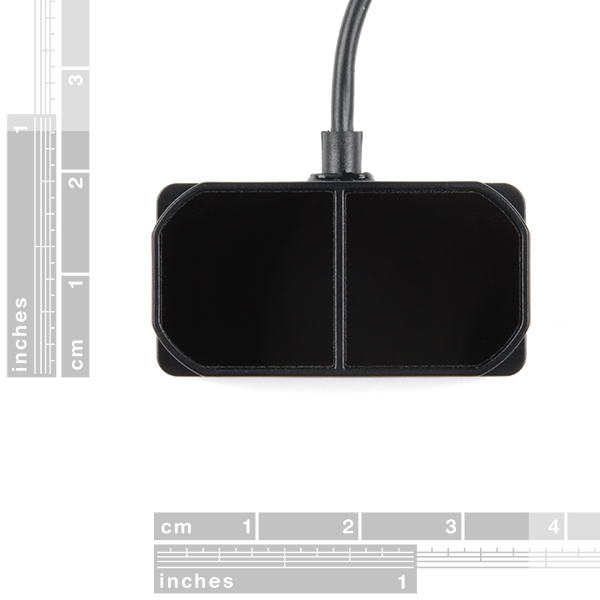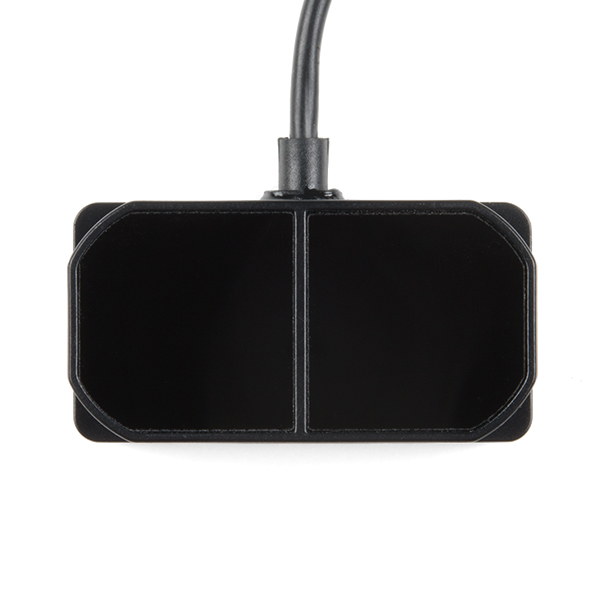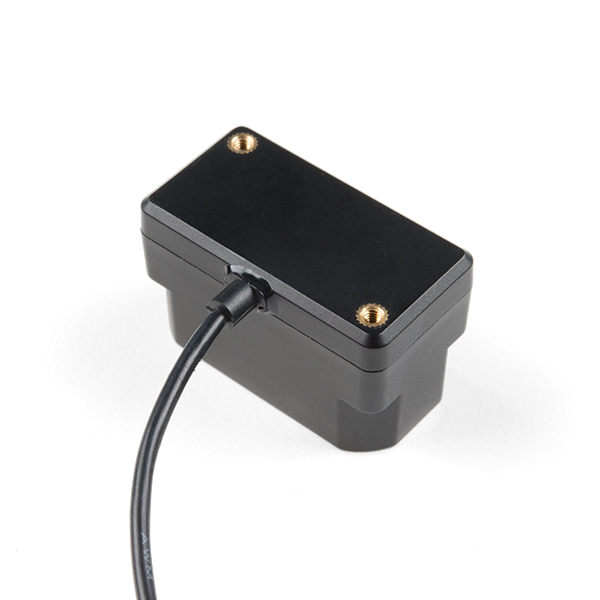The TFMini Plus is a ToF (Time of Flight) LiDAR sensor capable of measuring the distance to an object as close as 10 centimeters (+/- 5cm up to 6m) and as far as 12 meters (+/-1% starting at 6m)! As with all LiDAR sensors, your effective detection distance will vary depending on lighting conditions and the reflectivity of your target object, but what makes this sensor special is its size. Measuring only 35x18.5x21mm, the TFMini Plus allows you to integrate LiDAR into applications traditionally reserved for smaller sensors.
Setting itself apart from the original TFmini, the TFmini Plus has been designed with an IP65 enclosure meaning its "Dust tight & water resistant", and also passed the vibration test of drone level, which will greatly expand its application range. The TFMini Plus is easy to power at only 5V and easy to talk to using the UART communication protocol.
Important: This product does not use laser light for ranging. Instead it contains an LED and optics. Many such systems are being marketed under the name "LiDAR," although it may be more appropriate to think of this device as a "Time-of-Flight Infrared Rangefinder". It differs significantly from traditional IR rangefinders in that it uses ToF to determine range and not triangulation — as is performed by the Sharp GP-series devices.
- TFMini Plus LiDAR Module & integrated cable
- Operating Range - 0.1m~12m①
- Accuracy - ±5cm@(0.1-6m), ±1%@(6m-12m)
- Distance resolution - 5mm
- Frame rate - 1-1000Hz(adjustable)
- Ambient light immunity - 70klux
- Operating temperature - -20℃~60℃
- Enclosure rating - IP65
- Light source - LED
- Central wavelength - 850nm
- FOV - 3.6°
- Supply voltage - 5V±0.5V
- Average current - ≤110mA
- Power consumption - 550mW
- Peak current - 500mA
- Communication level - LVTTL(3.3V)
- Material of enclosure - ABS+PC
- Storage temperature - -20℃~75℃
- Weight - 11g
- Wire length - 30cm
TFMini Plus - Micro LiDAR Module Product Help and Resources
Core Skill: Programming
If a board needs code or communicates somehow, you're going to need to know how to program or interface with it. The programming skill is all about communication and code.
Skill Level: Competent - The toolchain for programming is a bit more complex and will examples may not be explicitly provided for you. You will be required to have a fundamental knowledge of programming and be required to provide your own code. You may need to modify existing libraries or code to work with your specific hardware. Sensor and hardware interfaces will be SPI or I2C.
See all skill levels
Core Skill: Electrical Prototyping
If it requires power, you need to know how much, what all the pins do, and how to hook it up. You may need to reference datasheets, schematics, and know the ins and outs of electronics.
Skill Level: Competent - You will be required to reference a datasheet or schematic to know how to use a component. Your knowledge of a datasheet will only require basic features like power requirements, pinouts, or communications type. Also, you may need a power supply that?s greater than 12V or more than 1A worth of current.
See all skill levels
Comments
Looking for answers to technical questions?
We welcome your comments and suggestions below. However, if you are looking for solutions to technical questions please see our Technical Assistance page.
Customer Reviews
4.5 out of 5
Based on 2 ratings:
Good and very cost-effective device.
I have bought this from other vendors before and was impressed with the SparkFun service! Also, I have needed support from the manufacturer (Benewake) and they are excellent as well.
Smart device and easy to install.
It is an impressive product fitting our application perfectly.





This looks like a great improvement over the original TFMini. However, I have a couple of concerns. What is that connector? Looks like something that I will have to cut off and add a more usable (0.1" header) connector. Also, those wires look really thin, what is the gauge? Datasheet says up to 500mA current. Can those thin wires handle that much?
Description says that it does I2C communication, but all I saw in the documents was UART. Did I miss I2C?
Looks cool, but a hookup guide would be much appreciated! Thanks for coming up with all the great new products!
There seems to be a library for both communication types from this guy. I have not tested them though. https://github.com/budryerson
I got it to work over I2C using bud's library. You must first use the serial library to change it to I2C.
Ted. I had same questions and my research shows it doesn't support i2c, or if it does there is no documentation on how it works. The connector is 1.25mm picoblade and it is a real pain to use with 2.54mm headers. I have some ideas but other projects currently taking up my time. A converter board to standard 0.1 spacing would be an awesome addition. I agree about the wire and don't dare want to splice given it's so thin.